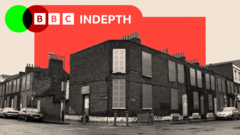England is currently grappling with a stark housing dilemma: a substantial number of vacant properties existing simultaneously with an acute shortage of affordable homes. Recent figures reveal that nearly 720,000 dwellings across the country stand empty, a figure that stands in sharp contrast to the ever-growing demand for accommodation and the extensive social housing waiting lists.
The reasons behind this significant inventory of unoccupied residences are complex and varied. Many properties may be held for investment purposes, left dormant while their value appreciates, or are involved in protracted legal disputes. Others require extensive renovations, rendering them uninhabitable in their current state, making immediate occupation impractical or economically unfeasible for owners. Additionally, a portion of these empty homes includes second residences or holiday lets that remain vacant for considerable periods throughout the year, further contributing to the overall count of unused properties.
This widespread vacancy represents a considerable missed opportunity in addressing the nation’s housing crisis. For the thousands of individuals and families currently on social housing waiting lists, the presence of hundreds of thousands of unused properties underscores a systemic challenge in resource allocation and urban planning. The disconnect between available housing stock and pressing societal needs raises fundamental questions about property utilization and community welfare, prompting critical examination into why these assets are not being leveraged to alleviate the ongoing housing shortage.



